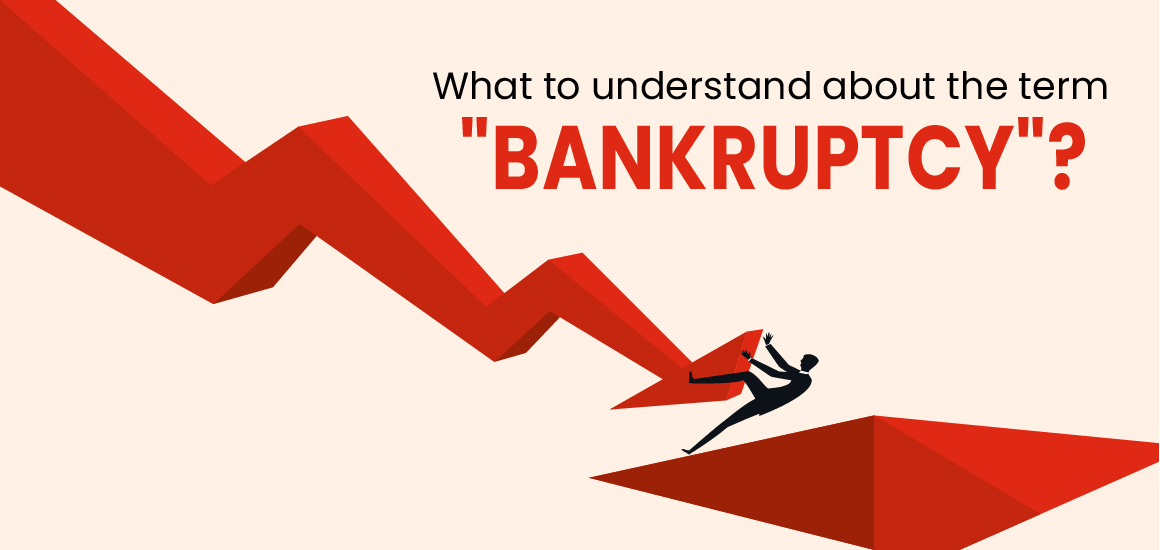What to understand about the term “Bankruptcy”?
Oftentimes we have heard the term “Bankruptcy” when any of our investments failed due to the reason an issuer went bankrupt. Does this ring a bell? It does create a sense of threat, but what is Bankruptcy about? How does a company get into this phase?
The dilemma of insolvency
Insolvency refers to a situation when a business entity is not capable of paying off its debt obligations.
Adding to this, Insolvency is just a situation and not the same as Bankruptcy. One can refer to Insolvency as a seedling that can cause Bankruptcy but it can be solved as well.
In simpler terms if Insolvency remains for a shorter time, it can still be resolved but if longer then it will lead to Bankruptcy.
So without Insolvency, there is no Bankruptcy but every Insolvency need not necessarily mean Bankruptcy all the time.
For instance, a company not able to pay the loan for a month is insolvency and if manages to pay by other means then it’s still in insolvency but if it is no longer in a condition to pay every month then it will file for Bankruptcy.
Did you know about the hidden form of inflation?
The term Bankruptcy
Having been in an Insolvency state, if the business still fails to pay off its debts for a longer time then either the company files for Bankruptcy or the creditors will.
If the net assets minus the liabilities on the balance sheet of a business is negative, it is sure that the investors have a serious issue with the borrowers, but not as long as it is a startup. Because usually startups start their journey with negative numbers, it eventually leads to a positive number as they grow.
Bankruptcy refers to “A legalized process where a business gets an opportunity to start fresh where the debt obligation is forgiven, also allowing the creditors to acquire some part of the payments from the liquidation of the business assets.”
That happens at the risk of having a hit on the credit report for a long time which makes borrowing difficult in the future for a company undergoing Bankruptcy.
As per Statista Report, 7,84,841 (The number also includes startups) companies shut their businesses as on the date June 2022 in India. It’s a huge number to look into but how does it reach that phase?
A look into deflation scenario
The reasons behind the bankruptcy
The firsthand culprit of the scenario could be due to a lack of financial management in the business that leads the business into a vulnerable situation of insolvency from which it continues to be in the trap of debt to keep the assets alive or it is followed by other causes on the list if it wasn’t for that.
1. Mediocre financial management
Management plays a crucial role in running a business. Without it, the operation has a massive hit, especially for a startup. It’s a concern that they don’t want to fall into a spiraling loop of having to lose the capital as it causes the need to have more debt than assets.
2. Natural disasters in the globe
The recent disaster of the Covid pandemic wasn’t an unforgettable thing to lose our memory of. Its impact on the economy still persists and the recovery is most expected. In the meantime, most of the running businesses were under the impact and had to shut down as the debt-to-equity ratio increased.
3. The downturn of economic conditions
Whether it is a dilemma of inflation or deflation or none, the increased competition in the market puts down many in the race while only a few strategic giants win it. When we talk about competition, it refers to asking yourself how much of the market share you occupy. So with lesser shares, the vulnerability to lose existing customers is much higher.
4. Conflict with the creditors
The fact is when we initially start the business with debt, managing finance is very crucial. There is no room for making unnecessary expenses as the debt comes with a repayment and interest clause to be paid timely. If not done timely, conflict is bound to happen with the creditors and is one of the reasons that might cause heavy distress if the creditors are not on good terms with your operations.
Listed ones are just a few to mention but there are many other reasons as well. Regardless of how we look into it, at all times the need to have good financial management along the run is quintessential.
Wrapping note
While for the investors it’s a fearful situation to be in the worst worst-case scenarios but there are liquidation processes that let the bondholders to still acquire the assets if they were invested in secured bonds.
But for the companies, it’s a lesson to be careful about the financial management of the business at every step of the process to avoid spiraling into the trap of debt unless there is strategic planning involved to not fall under the undercapitalization event.
Although it is true that by filing for Bankruptcy a company can free itself from the debt obligations, as the creditor or the administration from the RBI committee will come up with a resolution plan, another way to do it is to undergo the liquidation process by releasing the assets.






